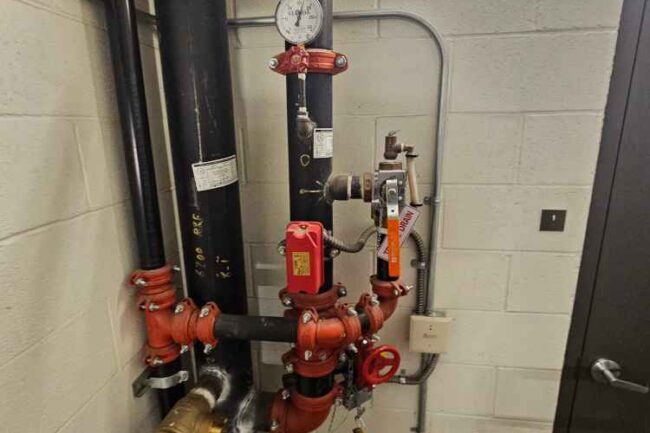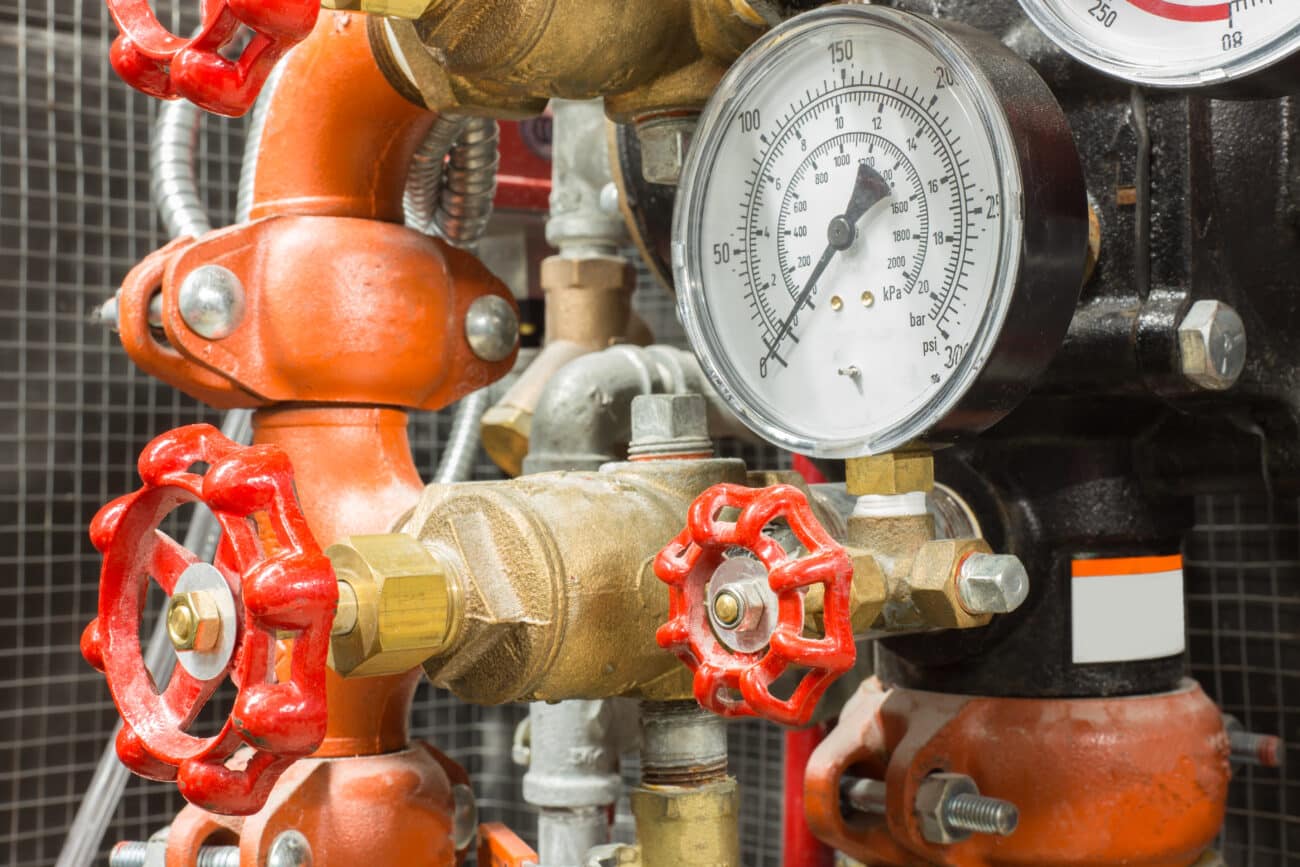It's not just a motto -
Fire Sprinklers Save Lives!
NFPA 25, Chapter 5 provides requirements for the inspection, testing, and maintenance (ITM) of fire sprinklers. They are the most common type of fire protection systems installed in the built environment. Fire sprinklers and the systems that run them are exceptionally reliable. However, like any mechanical systems, they require attention to remain operational.
Unlike other types of building systems, such as plumbing or HVAC, fire sprinkler systems are relatively static. Meaning that they normally do not have water flowing through them. Periodic ITM is necessary to ensure that the system and its components function as intended in the event of a fire emergency.

Services
Chapter 4 of NFPA 25 contains general requirements for the different types of Fire Sprinkler Systems covered under the scope of the standard.
5.1/6.1 General.
5.1.1 Minimum Requirements:
This chapter shall provide the minimum
requirements for the routine inspection, testing, and
maintenance of Fire sprinkler Systems.
Table 5.1.1.2 shall be used to determine the minimum
required frequencies for inspection, testing, and maintenance.
6.2.1 Components of standpipe and hose systems shall be
visually inspected annually or as specified in Table 6.1.1.2.
- Quarterly, Annual and Five-Year Certifications
- Inspections
- Testing
- Maintenance
- Repairs
*All services are performed per the State adopted NFPA 25 and the Local Authority Having Jurisdiction.
Repairs
Chapter 5 of the CA Ed NFPA 25 cites component replacement tables to offer guidance when Fire Sprinkler System components are adjusted, repaired, rebuilt, or replaced.
5.5/6.5 Component Action Requirements
5.5.1 Whenever a component in a sprinkler system is
adjusted, repaired, reconditioned, or replaced, the actions
required in Table 5.5.1 shall be performed.
6.5.1 Whenever components in standpipe and hose systems
are adjusted, repaired, reconditioned, or replaced, the
actions required in Table 6.5.1 shall be performed.
Bolt Mechanical, Inc. is here to guide you!
- Replacement Fire Sprinklers
- Control Valve Replacements
- Fire Sprinklers and Standpipe Piping Repairs
- Standpipe Valve Replacements
- CPVC Repairs
- Gauge Replacements
- Earthquake Bracing Repairs/Additions
- Flowswitch and Supervisory Device Replacements
*Work performed per the State Adopted NFPA 25, NFPA 14, 13 and the Local Authority Having Jurisdiction.
New Installations
NFPA 13, Chapter 8 provides the installation rules and characteristics that are unique to each particular type of system.
The types of Fire Sprinklers addressed by NFPA 13 include: wet pipe, dry pipe, pre-action, deluge, combined dry pipe and pre-action.
- New Projects
- Expansions
- Upgrades
- Tenant Improvements
- Plan Design & Submittal
*Work performed per the NFPA 13, 14 and the Local Authority Having Jurisdiction.
Document Control
Bolt Mechanical provides you with the required State Fire Marshal Certificates for your Fire and Life Safety systems.
If your Authority Having Jurisdiction (AHJ) contracts with The Compliance Engine, we send the required reports to them via our account.
Are you in a Los Angeles City Fire Chiefs Regulation 4 area? We submit those documents for you as well!
Access your files on our cloud server at anytime, from anywhere. We keep your records straight and up-to-date whenever you need them.
Call us anytime to learn more about our Document Control.
Customer Tech Tip
Information from NFPA for Owner’s and their Representatives
Fire Sprinklers – New Installations Tip for Owners
NFPA 13 Handbook 2025
4.2 * Owner’s Certificate
The owner or their agent must provide the sprinkler system installer with the following information before the system’s layout and detailing: the intended use of the building, a preliminary plan, water supply information, and any special knowledge of the water supply, including known environmental conditions that might be responsible for corrosion.
The owner’s certificate is intended to improve communication between the owner or their agent and the installing contractor or system designer. It serves as the starting point for the design basis of the system, confirming that the contractor is providing a system designed and installed based on valid information and demonstrating the owner’s knowledge of the facility’s use limits, based on the sprinkler system design criteria.
When should the certificate of ownership be turned in?
A proof of new ownership must be submitted for each and every new system and structures (that are currently systems) that experience a shift in occupation or modification of purpose.
NFPA 13’s intention is to specify that it is the duty of the design expert to decide on the classification of the product or occupancy, along with the approval of the local government possessing authority.
Tip for Owners – CA Ed NFPA 25 Inspections
In some cases, actions can be performed by the owner or the owner’s representative while the contractor or service provider is present and supervising the activities.
Some Authorities Having Jurisdiction (AHJs) or governmental agencies require special licensing of the service provider or individual inspector. It is recommended to always check with the local fire authority before performing any of the required ITM functions prescribed. (See the commentary following 4.1.1.3 for more information.)
Contact Bolt Mechanical with any Fire Sprinklers questions!





